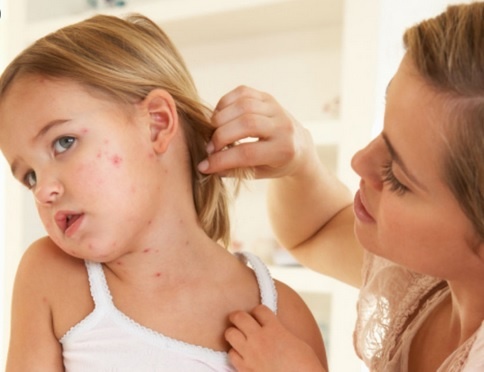In the first months of a child’s life, the pores of the skin – represent the openings of the sweat glands producing sweat. The sweat is then caught, the child cannot sweat, and the consequence is a rash. These eruptions are also known as miliaria or sudamina. The borders, about the size of a top head, can be red or white. The red ones are the ruby miliary, and the white ones are the crystalline miliary. In some cases, small blisters may appear. They are very easy to break and form very fine crusts. The stains last for a few days, but they can reappear if the causes of the rash are not eliminated.
Miliaria appears more often in the summer season due to excess heat. In some cases, they can occur in cold seasons if you dress your child excessively. The pores of the baby may also be blocked due to excess hydration or tight clothing. The use of certain soaps or detergents can aggravate the skin, in short, they can irritate it. In rare cases, the rash may be due to an infection caused by a fungus.
The rash most often occurs in areas of the body, where there is more concentration of sweat glands. These areas are the forehead, cheeks, eyelids – and even nose – in addition to the folds of the neck, armpits, chest, and back. , if the baby is wearing elastic pants).
To prevent the occurrence or recurrence, consider the following:
- If it is very hot outside, I recommend keeping the baby in a ventilated area at a comfortable temperature
- His clothes should not be too tight on the body. Avoid clothes with a very tight elastic waist
- And if it’s too cold, avoid wearing it too thick
- Change diapers frequently
- Excessive moisturizers, especially in summer, can be one of the causes of this skin problem.
- Use very light soaps or gels, specially designed for the baby’s delicate skin
- If the baby’s skin is irritated, avoid soap. Simply wash it with lukewarm water and dry it well, but without rubbing
If the rash is mild, it will go away on its own in a few days, and if the child’s condition does not improve, even after taking the measures mentioned above, go to the pediatrician. It may recommend a cortisone-based cream to fight the military, especially if the skin is very inflamed or itchy. In cases where the rash is caused by a fungus, your pediatrician will prescribe a fungal cream (against the fungus). Avoid using medical creams if this is not recommended by your pediatrician.
